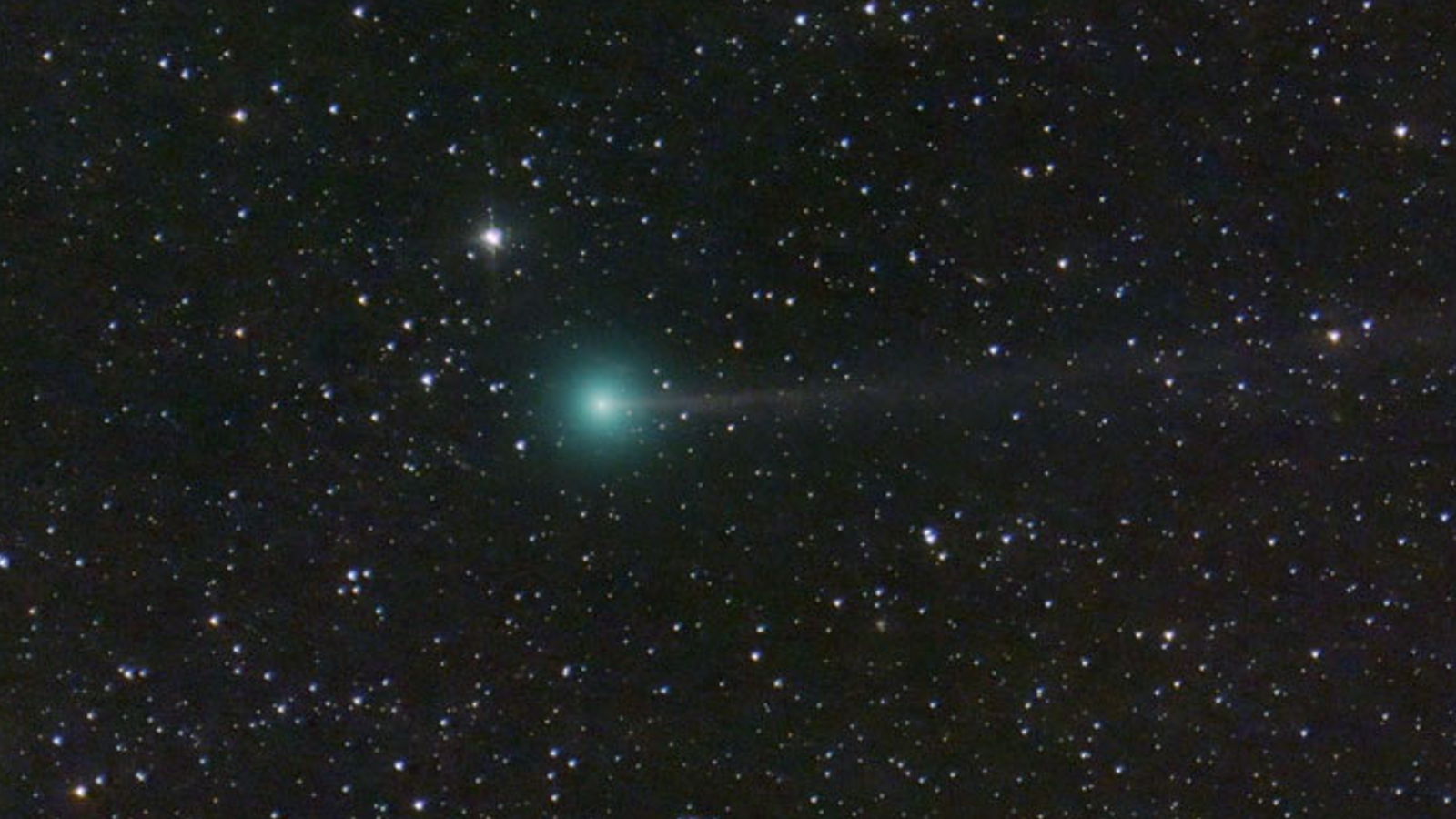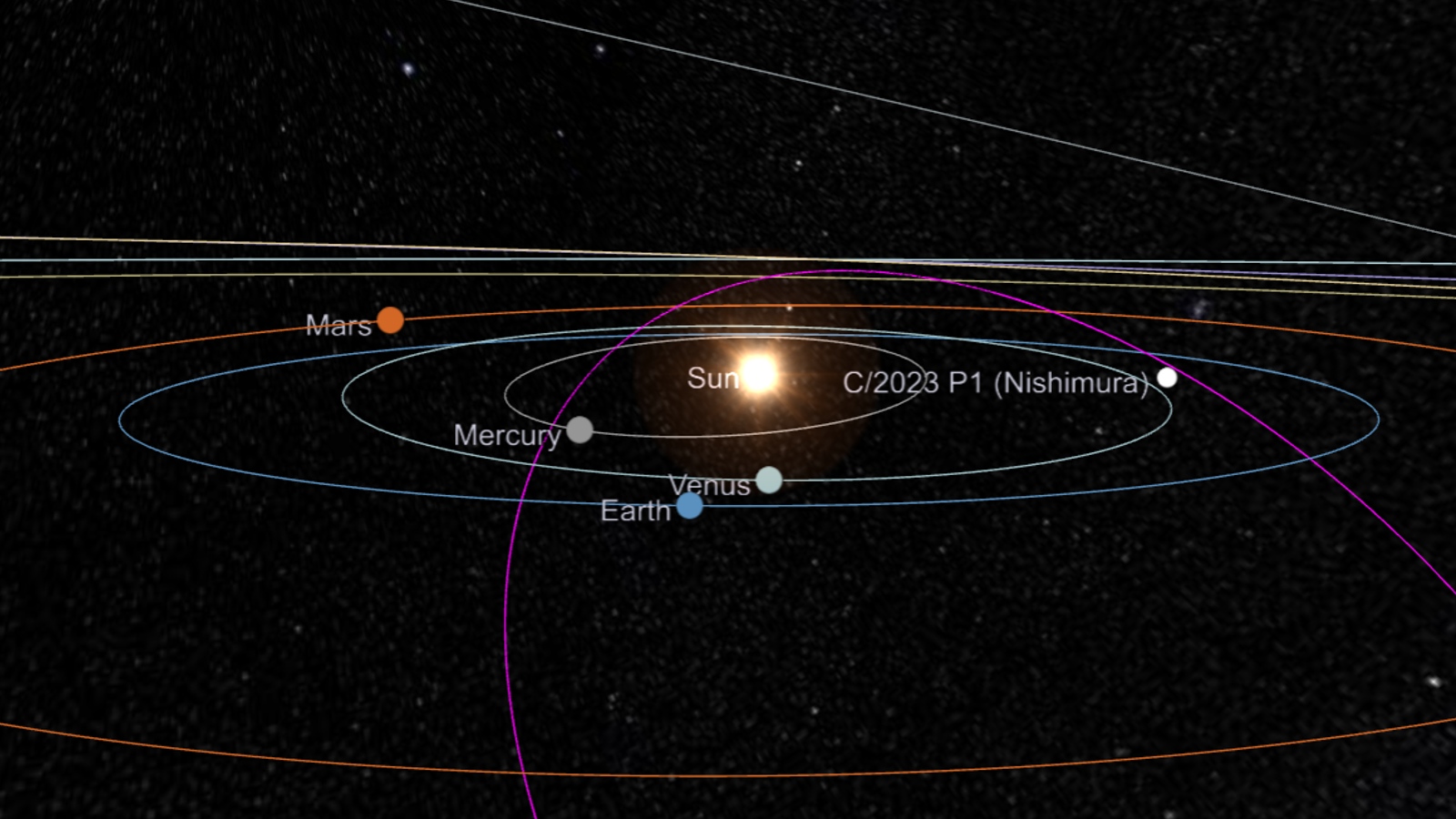New 'potentially interstellar' comet will be visible to the naked eye next month before leaving our solar system forever
Comet Nishimura has a hyperbolic orbit, which suggests that it may have come from outside the solar system and will likely be catapulted into interstellar space after slingshotting around the sun.

A newly discovered comet that's barreling toward Earth may have originated from outside our solar system — and will likely be catapulted back into interstellar space after performing an intense gravitational slingshot around the sun. Before it departs our cosmic neighborhood forever, the icy object will likely get 100 times brighter, meaning it will shine like a star in the night sky.
Amateur Japanese astronomer Hideo Nishimura discovered the comet, designated C/2023 P1, falling toward the heart of the solar system on Aug. 12. Follow-up observations suggest the object, nicknamed Comet Nishimura, has a hyperbolic orbit, according to Spaceweather.com. A hyperbolic orbit is when an object slingshots around a more massive object, like the sun, giving the smaller object enough energy to escape the gravitational pull of the larger one.
Comet Nishimura's orbit means that this is likely its first and final trip through the inner solar system. It is possible that the comet originated outside our star system, which would make it the third known interstellar object ever detected, following 'Oumuamua — which some astronomers speculatively suggested was an alien spacecraft — and Comet 2I/Borisov.
However, it is also possible that the comet originated from the outer reaches of the Oort Cloud — a reservoir of comets and other icy objects beyond the orbit of Neptune — and has been floating on the edge of the solar system for millennia before getting caught in the sun's gravitational pull. Such Oort Cloud wanderers have reached Earth before.

Comet Nishimura will make its closest approach to Earth on Sept. 13 and will reach its closest proximity to the sun on Sept. 18. As it comes closer to the sun, it will get brighter, with an apparent magnitude of between 5 and 3 in the night sky — which is as bright as a typical star, according to Spaceweather.com. The comet currently has an apparent magnitude of around 8, which makes it clearly visible through a telescope. (Apparent magnitude is a measure of brightness relative to Vega, one of the brightest stars visible from the Northern Hemisphere. The lower the number, the brighter the object.)
During mid-September, the best time to view Comet Nishimura will be shortly before sunrise or shortly after sunset because the comet's position relative to Earth, according to NASA.
Astronomers don't know when the possible interstellar interloper will depart the solar system. However, it is also possible that the intense force of the comet's solar slingshot will rip its solid nucleus apart, according to NASA.
Sign up for the Live Science daily newsletter now
Get the world’s most fascinating discoveries delivered straight to your inbox.
Recently captured photos of Comet Nishimura revealed that the comet's coma — the cloud of gas and dust that surrounds a nucleus — gives off a green glow. The unusual color is given off by molecules of dicarbon that are broken down by sunlight, according to Science magazine. In February, another green comet, named C/2022 E3 (ZTF), made its closest approach to Earth for 50,000 years.
Comet Nishimura isn't the only possible interstellar comet to venture into the inner solar system this year. In January, 96P/Machholz 1, a non-hyperbolic comet more than two-thirds the height of Mount Everest, was spotted making its sixth — and closest — known approach to the sun, having been discovered in 1986. In 2008, a chemical analysis of the comet's material marked Malchholz 1 as an outlier compared with other comets known to originate in the solar system. The comet's orbit also takes it closer to the sun than other non-hyperbolic comets. However, this evidence is not considered conclusive enough to declare Malchholz 1 an interstellar object.

Harry is a U.K.-based senior staff writer at Live Science. He studied marine biology at the University of Exeter before training to become a journalist. He covers a wide range of topics including space exploration, planetary science, space weather, climate change, animal behavior and paleontology. His recent work on the solar maximum won "best space submission" at the 2024 Aerospace Media Awards and was shortlisted in the "top scoop" category at the NCTJ Awards for Excellence in 2023. He also writes Live Science's weekly Earth from space series.









